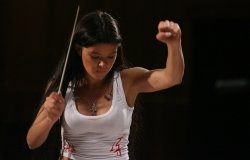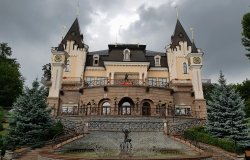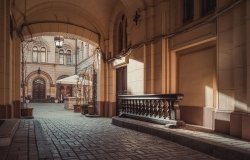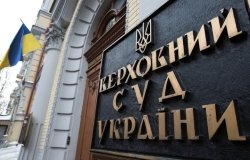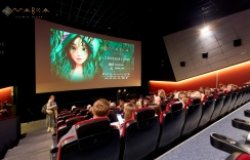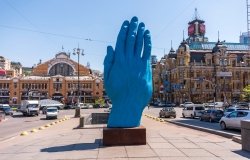
A blog of the Kennan Institute
A Dance Tour with a Difference

For the past several months, as more and more Russian rockets rain down onto Ukrainian infrastructure, stubbornly defiant Ukrainians have insisted on going about their lives as if nothing dreadful is going on. Sometime around the war’s half-year mark, they started going to work, returning to school, and running errands, even though the support systems required for a normal existence have been dislocated. Many neighbors and family members have gone abroad or to the front; too many people have died. Jerry-rigged generators and canisters of water lugged home from a central well nonetheless enable Ukrainians to chastise the Russian invaders every minute of every day.
The performing arts have been central to this demonstration of national and individual pride. As spring turned to summer a year ago, Kyivians began to gather in night clubs to share music and dance the night away. Opera returned to Lviv. Symphony concerts started up in Odesa. It’s true that normalcy remained beyond grasp, with clubs opening early so that they could close by curfew, theaters limiting the size of their audiences to the capacities of their bomb shelters, and orchestras and their audiences sitting in the dark while Russian attacks severed local power grids. But this cultural effervescence is important.
It has reached a new phase during this year’s first weeks. Cultural ensembles of various kinds began to go on tour around the war-ravaged country. These visiting companies remained modest, of course. The Lviv National Opera and Ballet dispatched pairs of artists to provincial centers without scores of musicians, costumes, and stage sets. Those performers, however, found ways to perform their favorite works before audiences thirsting for the arts.
On Friday, February 17, for example, two of the company’s leading dancers—Darina Kirik and Andriy Havrin—performed a dozen classical works before an audience in Chernihiv’s Shevchenko Theater. The program included Camille Saint-Saëns’s “Dance of Death” and “Swan,” Jacques Offenbach’s “Barcarolle,” John Williams’s “Schindler’s List,” and Ukrainian works by contemporary composer Yevhen Stankovich and others.
Chernihiv (as noted in my June 3, 2022 blog post) has been savaged by war. One of Ukraine’s oldest cities, it lies just 55 miles from the Russian border. It was an early target of invading forces, which lay siege to this city of 285,000 between February 24 and April 1, when they were driven away. A fifth of Chernihiv lies in ruins or has been seriously damaged, both historical architecture and the cityscape of everyday life. Russian strikes destroyed nearly 3,500 buildings, schools, and hospitals. Recent strikes have cripped local electrical and water facilities. Although not directly shelled this past winter, the city experienced the same problems with the electrical supply as the rest of Ukraine.
The dancers’ home city of Lviv, hundreds of miles to the west, has remained relatively untouched by the ongoing war. Their home theater company has been performing for months, albeit on a limited schedule. The company’s performers have had many opportunities to appear in Europe and even in North America. Nonetheless, they took the stage for a small yet enthusiastic audience of dance lovers recently, as they have in other cities around Ukraine.
Numerous commentators have observed since the war’s early days that Russia seems intent on making life in Ukraine so intolerable that Ukrainians will press their government to surrender. Instead, their constant attacks seem to have steeled Ukrainian resolve. The arts are making Ukrainian life a bit more tolerable. Those heading out to see some dance on a winter’s eve during a blackout, as in Chernihiv last month, are not likely to surrender any time soon.
The opinions expressed in this article are those solely of the author and do not reflect the views of the Kennan Institute.
See our newest content first.
Subscribe to receive the latest analysis from the Focus Ukraine blog.
About the Author

Blair A. Ruble
Former Wilson Center Vice President for Programs (2014-2017); Director of the Comparative Urban Studies Program/Urban Sustainability Laboratory (1992-2017); Director of the Kennan Institute for Advanced Russian Studies (1989-2012) and Director of the Program on Global Sustainability and Resilience (2012-2014)

Kennan Institute
The Kennan Institute is the premier US center for advanced research on Eurasia and the oldest and largest regional program at the Woodrow Wilson International Center for Scholars. The Kennan Institute is committed to improving American understanding of Russia, Ukraine, Central Asia, the South Caucasus, and the surrounding region though research and exchange. Read more


